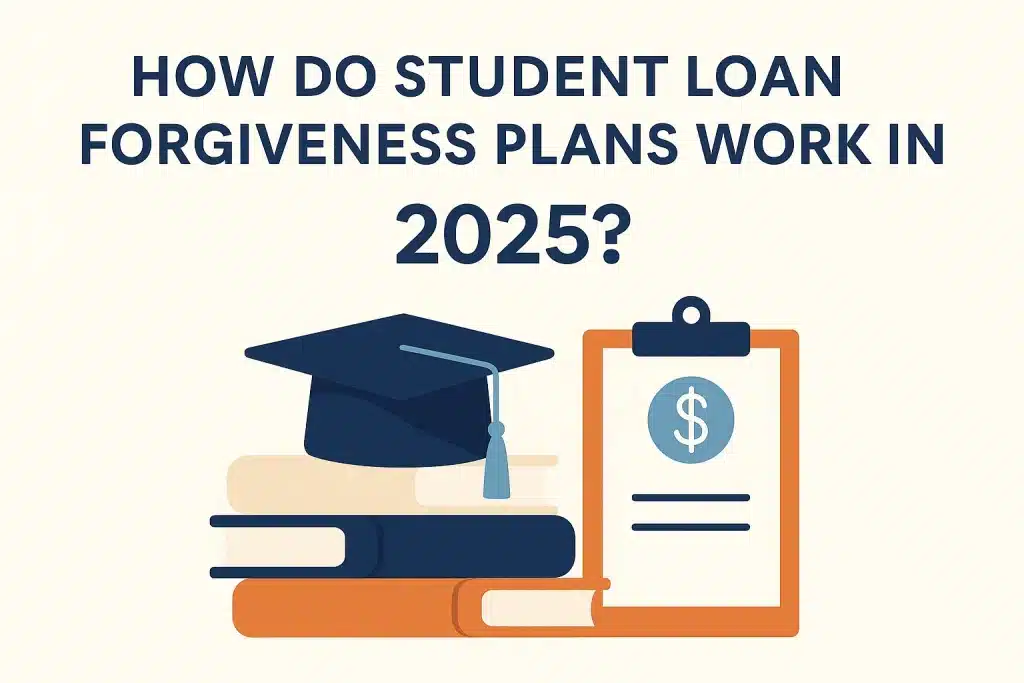In 2025, understanding student loan forgiveness plans is crucial for many recent graduates and those still paying off their educational expenses. With student loans at the forefront of financial concerns for millions, navigating through various relief programs is a priority. This guide will explore how debt forgiveness plans operate, helping borrowers make informed decisions and perhaps find viable ways to reduce their liabilities.
Individuals often find themselves overwhelmed by the complexity and the variety of available options. Yet, with adequate knowledge, it is possible to strategically manage these obligations. Let’s delve into how forgiveness schemes work, what options are available, and how graduates can benefit from these financial safety nets.
Understanding loan forgiveness options in 2025

Loan forgiveness programs in 2025 are structured to help individuals cope with the burden of educational borrowing. These programs are typically aimed at public service workers, teachers, and more who meet specific criteria. To qualify, borrowers often need to make consistent payments over a set period while meeting employment qualifications.
Eligibility and application processes can vary significantly. A critical aspect is understanding the terms and conditions that govern these initiatives. The availability of these options is dependent on legislation and financial policies, which can shift based on economic factors. Staying informed about policy changes ensures borrowers can take advantage of the latest offerings.
Specific loan forgiveness pathways
Several loan forgiveness pathways are available, each with unique requirements and benefits. Some popular options include the Public Service Loan Forgiveness (PSLF) and Teacher Loan Forgiveness. The PSLF is tailored for those in government or nonprofit jobs, requiring 120 qualifying monthly payments. Teacher Loan Forgiveness benefits educators at lower-income schools.
For those not in public service, income-driven repayment plans can also offer eventual loan forgiveness. These plans set monthly payments based on income and family size. While these pathways take longer, they still provide significant relief. Understanding the specific requirements for each pathway is essential to successfully navigate forgiveness opportunities.
Preparing to apply for loan forgiveness
Preparation is a key factor in successfully obtaining loan forgiveness. Borrowers should maintain meticulous records of their payments and employment. Proof of qualifying employment and accurate documentation of payments can expedite the application process when it is time to apply for forgiveness.
Regularly checking in with your loan servicer can also help ensure you are on track. This includes verifying payment counts and receiving updates on any changes to the forgiveness program rules. Keeping informed and organized helps alleviate the stress associated with managing large debts.
Practical steps to maximize chances
To increase the likelihood of qualifying, borrowers should regularly review their eligibility and payment status. Enrolling in the appropriate payment plan that aligns with one’s career and financial situation is crucial. Contact your servicers for any ambiguities or questions, as they can provide guidance specific to your circumstances.
Additionally, seek out updates on federal and state initiatives that might offer new relief opportunities. Networking with professional associations or financial advisors can provide further insights and strategies to navigate these plans effectively. Being proactive in managing loans can lead to substantial financial relief down the line.
Conclusion: Navigating student loan forgiveness
Understanding the complexities of student loan forgiveness plans in 2025 is vital for those burdened by educational debt. Being informed about different pathways and prepared to meet the requirements can significantly ease the financial strain. Effective management of loans through careful documentation, adherence to eligibility requirements, and awareness of available opportunities can lead to financial freedom.
As legislation and programs evolve, staying current with these changes empowers borrowers to take control of their financial futures. Working diligently toward forgiveness could ultimately reduce the long-term financial burden and improve overall quality of life.

